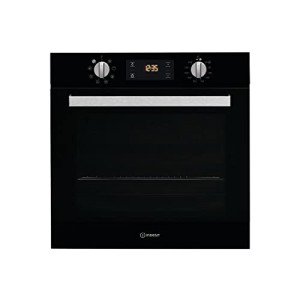
The Comprehensive Guide to Single Ovens in the UK
Over the last few years, the contemporary kitchen has experienced a renaissance, with house owners putting a precise focus on cooking devices that enhance both performance and aesthetic appeal. Among the essential kitchen devices is the single oven, a staple for lots of British homes. This short article explores the different aspects of single ovens in the UK, including their types, features, advantages, and considerations for potential purchasers.
Comprehending Single Ovens
What is a Single Oven?
A single oven is a standalone or built-in cooking home appliance developed to bake, roast, grill, and often steam food, using a large range of culinary possibilities. As the name suggests, single ovens consist of one main compartment, separating them from double ovens, which offer two different cooking locations.
Types of Single Ovens
Single ovens been available in various configurations and technologies. Below is a list of typical types found in UK kitchens:
Electric Single Ovens
- Utilizes electric coils or heating components.
- Supplies consistent and effective cooking.
- Frequently comes geared up with numerous features like self-cleaning cycles.
Gas Single Ovens
- Uses gas flames to create heat.
- Understood for instant heat and accurate temperature control.
- Popular among chefs for their cooking efficiency.
Compact or Built-In Single Ovens
- Designed to suit pre-existing kitchen cabinets.
- Conserves space while supplying cooking flexibility.
- Offered in both electric and gas models.
Convection Single Ovens
- Equipped with a fan that distributes hot air.
- Promotes even cooking, decreasing cooking times.
- Typically permits numerous rack positions for varied cooking.
Key Features to Consider
When selecting a single oven, there are several features that consumers should keep an eye out for. This can substantially impact the usability and performance of the appliance in day-to-day cooking. Notable functions include:
- Capacity: The interior capacity can vary widely. A lot of single ovens provide between 50 to 70 litres of cooking area, which is appropriate for family meals.
- Energy Efficiency: Look for A-rated designs that save electricity and reduce energy costs.
- Self-Cleaning Options: Some ovens use steam cleansing or pyrolitic cleansing, making maintenance easy.
- Programming Features: Programmable timers and settings can improve cooking accuracy, especially for baking.
- Security Features: Some ovens feature kid locks, residual heat indicators, and automatic shut-off functions for enhanced security.
Benefits of Choosing a Single Oven
Single ovens offer various benefits, making them popular choices for kitchens of all sizes. Here are some essential benefits:
Space Efficiency: The compact size of a single oven saves kitchen area, which is especially advantageous for apartment or condos and smaller homes.
Cost-Effectiveness: Typically, single ovens are more cost effective than double ovens in terms of preliminary purchase price and energy usage.
Simpleness of Use: With just one cooking compartment, single ovens are uncomplicated to operate, making them ideal for beginner cooks.
Versatility: A single oven can deal with a multitude of cooking tasks-- from baking bread to roasting meats-- making it flexible enough for daily cooking experiments.
Setup Considerations
When considering buying a single oven, there are crucial installation elements to contemplate:
Size and Dimensions: Always check the area where the oven will be set up to ensure that it fits easily. The standard size for built-in designs is usually around 60cm wide.
Power Supply: Determine whether you require an Electric Single Oven or gas oven based upon existing kitchen components. An electrical expert may be needed for electric designs.
Ventilation: Ensure appropriate ventilation, particularly with gas ovens, to avoid the buildup of harmful gases.
Popular Single Oven Brands in the UK
The marketplace for single ovens is filled with a range of brands, each offering unique features and dependability. The following table lists a few of the most advised brand names along with their standout features.
| Brand | Key Features | Price Range |
|---|---|---|
| Bosch | Reliable, efficient, modern-day designs | ₤ 400 - ₤ 800 |
| Neff | Slide & & Hide door, user-friendly controls | ₤ 600 - ₤ 1,200 |
| Beko | Economical choices with excellent performance | ₤ 250 - ₤ 600 |
| John Lewis | Top quality, elegant styles | ₤ 500 - ₤ 1,000 |
| AEG | Advanced innovation and energy efficiency | ₤ 600 - ₤ 1,500 |
Frequently asked questions
Q1: Can I change my double oven with a single oven?
Yes, you can replace a double oven with a single oven, but make sure to validate the offered space and power supply compatibility.
Q2: How much does it cost to run a single oven?
The running costs of a single oven depend on its energy performance score and how often it is used. Normally, an A-rated oven will be cheaper to run than lower-rated counterparts.
Q3: Are single ovens great for baking?
Definitely! Single ovens, particularly convection designs, are well-suited for baking due to their equally dispersed heat.
Q4: How long do single ovens generally last?
With appropriate upkeep, a single oven can last anywhere from 10 to 20 years. Regular cleaning and servicing can extend its life expectancy.
Q5: Do single ovens featured warranties?
A lot of makers provide a warranty ranging from one to five years, depending upon the brand name and model. It is suggested to examine warranty alternatives before acquiring.
Single ovens play a vital role in the contemporary UK kitchen, combining performance, adaptability, and space-saving advantages. With a variety of types and features offered, customers can easily discover a single oven that satisfies their cooking needs and choices. By thinking about the vital aspects highlighted in this post, homeowners can make informed choices, guaranteeing that their kitchen stays a center for cooking creativity for years to come.

